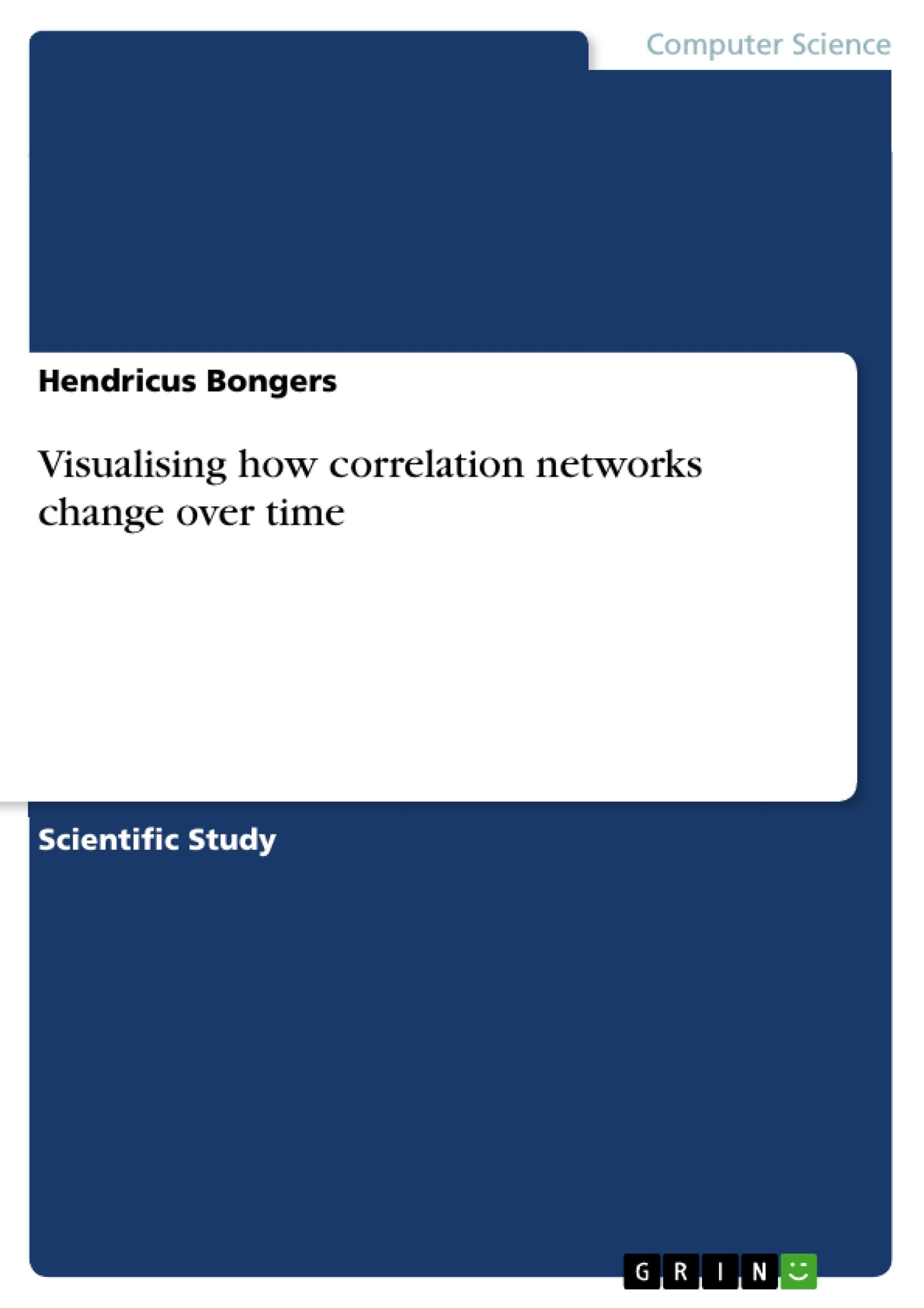This thesis is made to research and develop a tool for visualising gene expression data. The report will describe and illustrate how correlations between genes will change in a time course. The tool that is developed can be widely used in biology (e.g. toxicology, studying the cell cycle, studying the progression of diseases) and the 3D environment gives better insights in the gene expression data. For this research the given data will be preprocessed first before analysing. After this step the unexpressed genes will be filtered out. The remaining genes will be used to make a correlation matrix. The correlation matrix will be clustered in smaller matrices to make it easier for algorithms to analyse the data. An advantage of clustering is that it can visualise the inter- and intra-cluster correlations. After the clustering step two filtering algorithms will be used on each cluster to retrieve the final correlation networks. The clustering and filtering is done for every time point. Between this the data is interpolated for smooth simulation. All clusters will be visualised in 3D environment and will be made interactive by using virtual reality. This thesis has as a goal to develop a tool that gives insight on how correlation networks change in a time course and give answers to the following questions: Which simulation techniques work best? What layout algorithm will give the best visual outcome? Will a 3D environment improve readability of the data? Which filters are applicable to the data?
Inhaltsverzeichnis (Table of Contents)
- Abstract
- Introduction
- Research questions
- Methods
- Preprocessing and filtering
- Clustering
- Expressed and unexpressed genes
- Variance and correlation filtering
- Making the correlation network
- Spearman correlation
- Pearson correlation
- Visualising
- Force directed layout
- Simulating
- Linear interpolation
- Spline interpolation
- Preprocessing and filtering
Zielsetzung und Themenschwerpunkte (Objectives and Key Themes)
This thesis aims to develop a tool for visualizing gene expression data, specifically focusing on how correlations between genes change over time. The tool's 3D environment aims to enhance readability and provide insights into the data. The research explores various techniques for data preprocessing, correlation calculation, visualization, and simulation.
- Visualizing gene expression data in a time course.
- Developing a 3D visualization tool for enhanced readability.
- Comparing different simulation techniques for data interpolation.
- Evaluating the effectiveness of various layout algorithms for visualization.
- Implementing data filtering methods for managing large datasets.
Zusammenfassung der Kapitel (Chapter Summaries)
- Abstract: This thesis outlines the development of a tool for visualizing gene expression data, focusing on the temporal changes in gene correlations. The tool is designed for applications in biology, particularly in toxicology, cell cycle analysis, and disease progression studies.
- Introduction: The thesis introduces the field of computational biology and genomics, emphasizing the importance of analyzing DNA to understand complex biological systems. The focus is on how correlation networks between genes evolve over time.
- Methods: The methods section describes the steps involved in data preprocessing and filtering, including clustering, filtering expressed and unexpressed genes, and applying variance and correlation filters. It also details the methods used for constructing the correlation network, including Spearman and Pearson correlation calculations. Finally, it discusses visualization approaches using the force directed layout algorithm and simulation techniques like linear and spline interpolation.
Schlüsselwörter (Keywords)
The key focus topics of this thesis include gene expression data visualization, correlation network analysis, time course simulation, data preprocessing, filtering techniques, 3D visualization, force directed layout, and biological applications such as toxicology, cell cycle studies, and disease progression research.
- Quote paper
- Hendricus Bongers (Author), 2016, Visualising how correlation networks change over time, Munich, GRIN Verlag, https://www.hausarbeiten.de/document/370173


